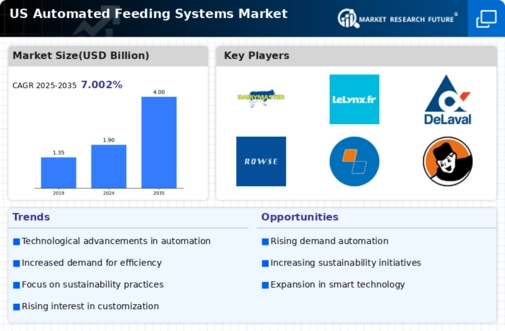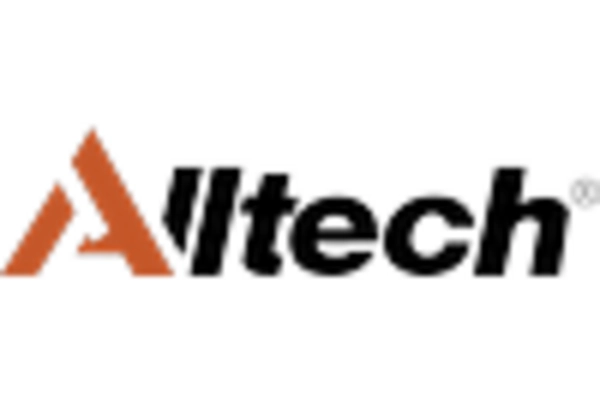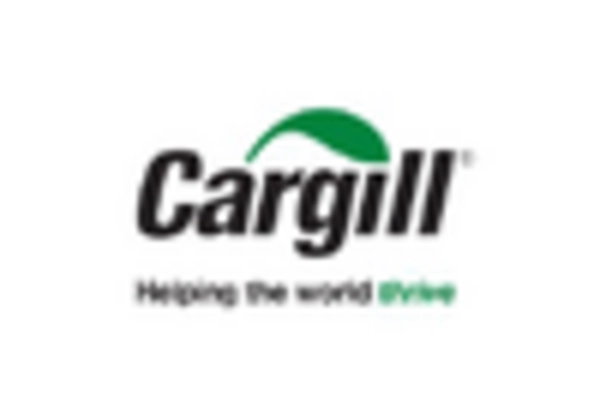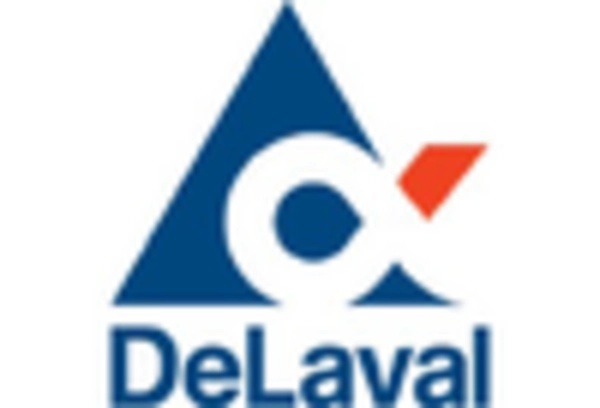Rising Labor Costs
The automated feeding-systems market is experiencing growth due to the increasing labor costs in the agricultural sector. As wages rise, farmers and producers are seeking efficient solutions to minimize labor dependency. Automated feeding systems can significantly reduce the need for manual labor, allowing for streamlined operations. In the US, labor costs have risen by approximately 15% over the past five years, prompting many in the industry to invest in automation. This trend is likely to continue, as the demand for cost-effective solutions becomes more pressing. Consequently, the automated feeding-systems market is positioned to benefit from this shift, as producers look to enhance productivity while managing rising operational expenses.
Focus on Animal Welfare
The automated feeding-systems market is influenced by the growing focus on animal welfare. Consumers are becoming more aware of the conditions in which livestock are raised, leading to a demand for systems that promote better health and well-being. Automated feeding systems can contribute to improved animal welfare by ensuring that animals receive the right amount of feed at the right times, reducing stress and promoting better growth rates. This shift in consumer preferences is likely to drive investment in automated solutions, as producers seek to align with ethical standards and enhance their marketability. As a result, the automated feeding-systems market is expected to grow in response to these changing consumer expectations.
Technological Advancements
Technological advancements play a crucial role in the growth of the automated feeding-systems market. Innovations in sensors, artificial intelligence, and machine learning are enhancing the efficiency and effectiveness of feeding systems. For instance, the integration of IoT devices allows for real-time monitoring and adjustments, optimizing feed distribution. The market is projected to grow at a CAGR of 10% over the next five years, driven by these technological improvements. As producers increasingly adopt these advanced systems, the automated feeding-systems market is likely to expand, offering more sophisticated solutions that cater to the evolving needs of the agricultural sector.
Government Support and Subsidies
Government support and subsidies are playing a pivotal role in the expansion of the automated feeding-systems market. Various agricultural policies in the US are aimed at promoting technological adoption among farmers, including financial incentives for investing in automation. These initiatives can lower the barriers to entry for producers looking to implement automated feeding systems. For instance, recent programs have allocated millions in funding to support the modernization of agricultural practices. This backing from the government not only encourages the adoption of automated systems but also fosters innovation within the industry, thereby propelling the automated feeding-systems market forward.
Increased Demand for Livestock Production
The rising demand for livestock production is a significant driver for the automated feeding-systems market. As the population grows, the need for meat, dairy, and other animal products is escalating. In the US, livestock production is projected to increase by 20% by 2030, necessitating more efficient feeding solutions. Automated feeding systems can help producers meet this demand by ensuring consistent and accurate feed delivery, which is essential for optimal animal growth and health. This trend indicates a robust market opportunity for automated feeding systems, as they provide a means to enhance productivity in response to the growing consumption of animal products.

















Leave a Comment